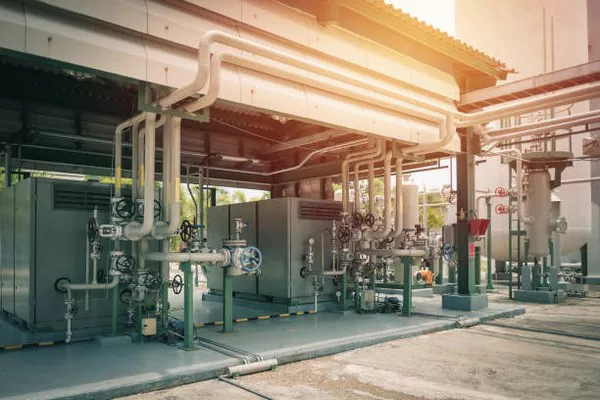Transformer substations play a pivotal role in the efficient transmission and distribution of electrical power. They are essential components of the modern electrical grid, facilitating voltage transformation and ensuring a reliable supply of electricity to end-users. These substations come in various types, each designed for specific purposes and functions. In this article, we will delve into the different types of transformer substations, their characteristics, and their significance in the power distribution network.
Distribution Substations
Distribution substations are the most common type of transformer substations and are typically located closer to the end-users. They serve the critical function of stepping down the voltage from the high-voltage transmission lines to levels suitable for local distribution. Distribution substations can be further categorized into three subtypes:
a. Primary Distribution Substations: These substations reduce high-voltage power from transmission lines to a lower voltage, typically ranging from 2.4 kV to 34.5 kV. They supply power to secondary distribution substations, industrial areas, and large commercial complexes.
b. Secondary Distribution Substations: Situated closer to the end-users, secondary distribution substations further reduce the voltage to levels typically used by residential and small commercial customers, such as 120/240V or 208Y/120V.
c. Tertiary Distribution Substations: These substations provide power to localized areas, like residential neighborhoods or small business districts. They step down voltage to the final distribution levels, typically 120/240V or 208Y/120V.
Transmission Substations
Transmission substations are critical components of the power grid responsible for stepping up or stepping down voltage levels to efficiently transmit electricity over long distances. These substations connect the high-voltage transmission lines to the distribution network. Transmission substations can be classified into two primary categories:
a. Step-Up Transmission Substations: These substations increase the voltage levels, typically from 115 kV to 765 kV, to facilitate long-distance power transmission. Higher voltage levels reduce power losses during transmission.
b. Step-Down Transmission Substations: Situated at the receiving end of the transmission lines, these substations decrease the voltage to levels suitable for further distribution. Voltage is usually reduced from 115 kV or higher to levels around 34.5 kV.
Switching Substations
Switching substations, also known as switching stations or switching yards, are pivotal in ensuring the flexibility and reliability of the electrical grid. They are primarily responsible for directing the flow of electricity, enabling maintenance work, and isolating faults to maintain system stability. There are two main types of switching substations:
a. Transmission Switching Substations: These substations control and manage the flow of power on the high-voltage transmission lines. They allow for the reconfiguration of the transmission grid, rerouting power during maintenance, and isolating faults to prevent widespread outages.
b. Distribution Switching Substations: These substations are responsible for managing the distribution network. They ensure that power is directed to the appropriate feeders and can isolate faulty sections to minimize disruptions to end-users.
Mobile Substations
Mobile substations are a versatile type of substation designed for rapid deployment in emergency situations or temporary power needs. They consist of a transformer, circuit breakers, and other necessary equipment housed on a mobile platform, such as a truck or trailer. Mobile substations are commonly used in the following scenarios:
a. Emergency Restoration: Mobile substations can be quickly deployed to restore power in areas affected by natural disasters, accidents, or equipment failures, reducing downtime for customers.
b. Temporary Installations: They are used for temporary power needs, such as construction sites, special events, or remote locations, where installing a permanent substation is not feasible.
Underground Substations
Underground substations are built below ground level and are primarily used in densely populated urban areas or locations where aesthetics and space constraints are critical considerations. These substations are designed to minimize their visual impact and reduce noise levels. Underground substations offer several advantages:
a. Aesthetic Considerations: They blend seamlessly with the surroundings and do not disrupt the urban landscape.
b. Reduced Environmental Impact: Underground substations are less prone to environmental damage, such as vandalism and weather-related issues.
c. Space Efficiency: They maximize land use in densely populated areas where available space is limited.
Compact Substations
Compact substations are a space-saving solution designed for areas with limited available land. These substations are compact in size and house all essential components in a single enclosure. Compact substations are commonly used in:
a. Urban Areas: To address space constraints and minimize land use.
b. Industrial Complexes: To provide power distribution in confined industrial environments.
c. Renewable Energy Installations: To facilitate the connection of renewable energy sources like wind and solar farms to the grid.
Conclusion
Transformer substations are integral to the efficient functioning of the electrical grid, facilitating the transformation and distribution of electrical power to end-users. Understanding the different types of transformer substations is crucial for ensuring a reliable and stable power supply. From distribution and transmission substations to switching, mobile, underground, and compact substations, each type serves a specific purpose within the broader electrical infrastructure. As the demands on the power grid continue to evolve, the adaptability and versatility of these substations will play an increasingly vital role in meeting the energy needs of modern society.

